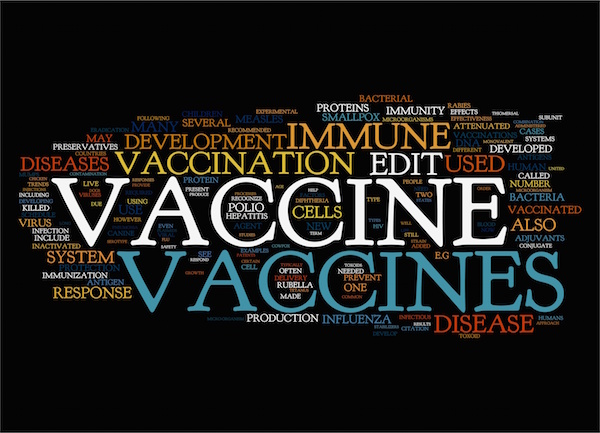TUESDAY, Feb. 16, 2016 (HealthDay News) — As the Zika virus continues to spread fear and potentially devastating health problems throughout Latin America and the Caribbean, scientists are weighing the use of a controversial weapon — genetically modified mosquitoes.
The mosquito-borne Zika virus is thought — but not proven — to be behind an epidemic of birth defects that leave newborns with very small heads and potential brain damage.
The spread of the birth defects, called microcephaly, prompted the World Health Organization (WHO) last week to call the Zika outbreak a global emergency.
The U.S. Centers for Disease Control and Prevention has said it does not expect the Zika virus to become widespread in the United States. But the CDC is recommending that pregnant women avoid those regions of Central and South America and the Caribbean where Zika virus has been identified and officials have described it as spreading “explosively.”
Next week, WHO’s director general, Dr. Margaret Chan, will travel to Brazil — the epicenter of the microcephaly epidemic — to discuss the outbreak with the country’s health minister and other officials, the Associated Press reported. It’s believed there have been more than 4,100 suspected or confirmed cases of microcephaly in Brazil.
The WHO said in a statement Tuesday that advisers to the United Nations-affiliated agency have recommended further field tests of genetically modified mosquitoes. Sterile male mosquitoes were released in the Cayman Islands to fight dengue fever, to mate with wild Aedes aegypti female mosquitoes. That type of mosquito carries both the Zika and dengue viruses, the WHO said.
Another technique being developed “involves the mass release of male insects that have been sterilized by low doses of radiation. When sterile males mate, the female’s eggs are not viable, and the insect population dies out,” the WHO said in the statement. This technique has worked in the past to control “agriculturally important insect pests,” the agency added.
Also under consideration, according to WHO: a “promising biological method of control [that] uses male mosquitoes carrying the naturally occurring Wolbachia bacteria, which are found in 60 percent of common insects, including butterflies and fruit flies. These bacteria do not infect humans or other mammals. When females mate with males carrying the bacteria, the eggs do not hatch, thus suppressing mosquito populations.”
But environmentalists have been leery of using genetically modified mosquitoes, contending there’s no way to predict the impact of destroying an entire insect population, the AP said.
Adding urgency to the situation, the WHO said Saturday that more cases of the rare but potentially devastating neurological disorder Guillain-Barre syndrome are appearing in some Latin American countries where the Zika virus is present.
WHO officials said Guillain-Barre syndrome, which can cause temporary paralysis, has been reported in Brazil, Colombia, El Salvador, Suriname and Venezuela.
But, the WHO added, the “cause of the increase in GBS (Guillain-Barre syndrome) incidence . . . remains unknown, especially as dengue, chikungunya and Zika virus have all been circulating simultaneously in the Americas.”
According to the U.S. National Institutes of Health, Guillain-Barre syndrome causes the immune system to attack the peripheral nervous system. As a result, muscles have trouble responding to signals from the brain. No one knows what causes the syndrome. Sometimes it is triggered by an infection, surgery, or a vaccination.
Patients typically reach the point of greatest weakness or paralysis days or weeks after the first symptoms. The symptoms then stabilize for a period of days, weeks, or even months. The recovery period may be as little as a few weeks or as long as a few years, according to the NIH.
Meanwhile, U.S. health officials began shipping test kits for the Zika virus late last week to health departments around the country. They are to be used by pregnant women returning from Latin America and the Caribbean.
CDC Director Dr. Tom Frieden and Dr. Anthony Fauci, director of the U.S. National Institute of Allergy and Infectious Diseases, appeared before a Congressional panel last week to lobby for President Barack Obama’s request for $1.8 billion in emergency funds from Congress to combat the threat of Zika virus.
The Zika virus was first identified in Uganda in 1947, and until last year was not thought to pose serious health risks. In fact, approximately 80 percent of people who become infected never experience symptoms.
But the increase of cases and birth defects in Brazil in the past year has prompted health officials to reassess their thinking about Zika and pregnant women.
Since the Zika epidemic first surfaced in Brazil last spring, the virus has spread to 30 countries and territories in Latin America and the Caribbean. The World Health Organization now estimates there could be up to 4 million cases of Zika in the Americas in the next year.
The Obama administration’s request for funding would allow for an expansion of mosquito-control programs, speed development of a vaccine, develop diagnostic tests and improve support for low-income pregnant women.
The earliest a vaccine could be developed would be some time next year, Fauci has said.
More information
For more on Zika virus, visit the U.S. Centers for Disease Control and Prevention.
To see the CDC list of sites where Zika virus is active and may pose a threat to pregnant women, click here.
Copyright © 2025 HealthDay. All rights reserved.

